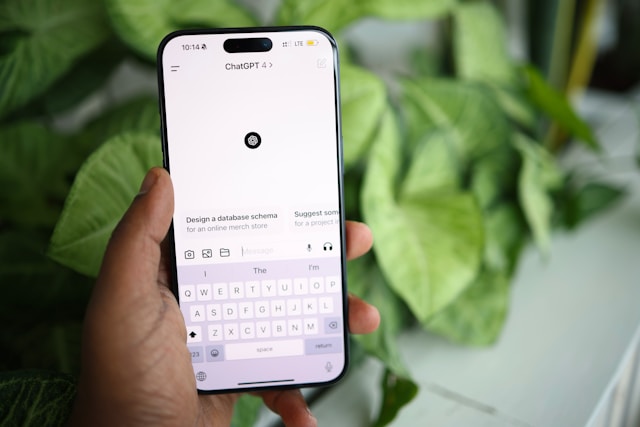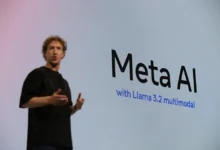
Microsoft thought Copilot would be the AI star of the office. But guess what? People keep going back to ChatGPT instead.
That’s not just a quirk, it says a lot about how we actually use AI at work today, and what’s coming next for Microsoft’s biggest bet.
ChatGPT Went from Fun to Essential, Fast
Remember when ChatGPT was just a cool thing you tried out at home? Now it’s becoming a must-have for a ton of professionals. OpenAI says over 3 million businesses pay for it, way up from 2 million a few months ago.
But here’s the kicker: this isn’t because IT told everyone to use it. People bring ChatGPT into their workday because it just works better and feels familiar.
One IT person said it best, “We pay for Copilot, but honestly, we actually use ChatGPT.”
That’s a huge shift in what really matters.
What Makes ChatGPT So Good? Meet the o3 Model
A big reason ChatGPT works so well at work is this new o3 model from earlier this year. Microsoft’s Copilot hasn’t caught up with that yet.
The o3 model searches through tons of sources like a bloodhound on a scent. That means when you ask ChatGPT something, it doesn’t just pull up random info, it figures out what you really need.
This is why, even though Google’s AI looks good on paper, people still prefer ChatGPT for real work stuff.
It’s Not About Being Bigger, It’s About Getting Better
Here’s the secret: AI isn’t just about making bigger models. It’s about fixing the little things that make a big difference, like understanding what you mean or not messing up the format.
OpenAI and others keep tuning ChatGPT behind the scenes. These fixes don’t always show up in fancy stats but make your day-to-day experience smoother.
That’s why ChatGPT keeps getting better at work even without a flashy new release.
ChatGPT Is Becoming the Hub for How We Work
OpenAI is building tools so teams can chat, share notes, and keep projects moving, all inside ChatGPT.
That’s huge. For decades, Microsoft’s Word, Excel, and Outlook were where most of us got things done. But what if you start your day by opening a chat window instead?
If ChatGPT becomes the place everyone goes first, Microsoft’s Office might lose its throne.
Plus, ChatGPT’s pricing is flexible, teams only pay for what they use, unlike Microsoft’s flat monthly fee. That matters when you’re trying out new ways of working.
Size Doesn’t Always Win Anymore
Instead of just making AI bigger, labs are making it smarter and faster.
Scaling as a product differentiator died in 2024.
That’s bad news for Microsoft, which bet big on giant data centers. Turns out, you don’t always need the biggest engine to win.
Microsoft’s Relationship With OpenAI Is Getting Complicated
Microsoft and OpenAI used to be tight partners, but now things feel a bit rocky. Talks about contracts are tense, and OpenAI wants more freedom.
Microsoft is betting on other AI companies, like Mistral and Elon Musk’s xAI, to hedge its bets. But those newer players aren’t proven yet.
Meanwhile, Copilot’s popularity isn’t clear. People seem to like ChatGPT more, even without Microsoft’s deep system integration.
The Other Tech Giants Aren’t Standing Still
Apple’s playing it safe, using OpenAI tech inside iPhones instead of building its own big AI brains. Some say Apple should team up more and explore smart devices or even robots.
Google’s AI is strong but it hasn’t won the hearts of everyday users like ChatGPT. Its best bet is to bring AI closer to Android users.
Meta’s having a rough time, buggy AI releases and cheating scandals rocked their plans. Mark Zuckerberg is scrambling to rebuild with new hires and a fresh AI lab but it’s still early days.
But none of them have matched how naturally ChatGPT in the workplace has woven into people’s daily lives.
What Microsoft Needs to Do Now
Microsoft still has big strengths: Azure, Windows, and enterprise trust. But if people keep choosing ChatGPT first, those won’t be enough.
Here’s what Microsoft has to focus on:
- Speed up Copilot improvements.
- Lock down access to the best GPT models, even if it means giving up some control.
- Invest in other AI players to diversify.
- Make AI easy and natural to talk to, not just click around.
The Real Threat: Losing the Workday Starting Point
Back in 2023, ChatGPT was a neat party trick. By 2024, it was your personal helper. Now in 2025, it’s becoming how we get work done.
If OpenAI nails collaboration and smart assistants, ChatGPT won’t just be a tool, it could become the whole workspace.
And that’s the real challenge for Microsoft. Because soon, the first thing you open at work might not be Excel or Outlook anymore, it could be a chat box that already knows what you want to do.
Follow us on WhatsApp, Telegram, Twitter, and Facebook, or subscribe to our weekly newsletter to ensure you don’t miss out on any future updates. Send tips to editorial@techtrendsmedia.co.ke


